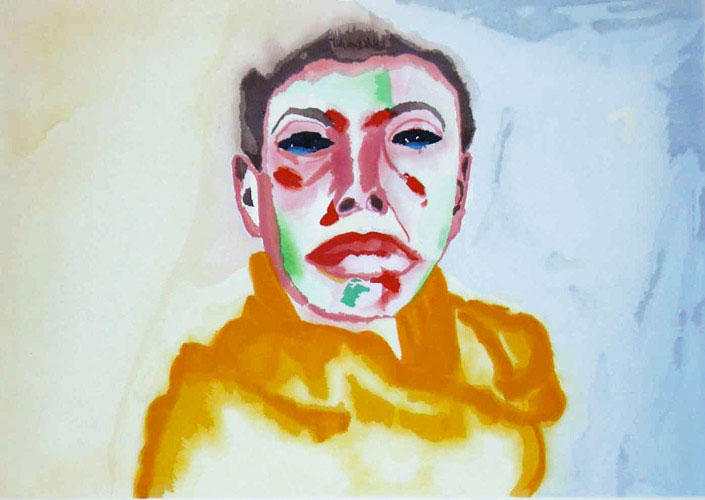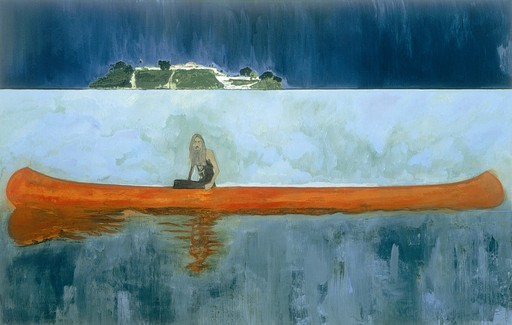It is History that chooses.
When I started teaching art history in the early 80s, Conceptual Art was waning and painting was flourishing with Neo Expressionism and Transvanguardia. Finally, the good old painting was back. The seducing viscosity of the paint, large formats and ample poetic markings were revived by artists such as Julian Schnabel and Francesco Clemente.
Yet, an other tendency in the new painting inherited some of the visions of conceptual and performance artists, such as Acconci, Günter Brus, Otto Mühl, et Hermann Nitsch Nitz, Schwarkogler, Muehl, Pane, who used blood, defecation, torture and self mutilation as an integral part of their works. Moreover, it bathed in the “fifteen minutes of fame” Pop Art philosophy and the 1960’s consumerism to the point that, it seems, mercantilism, goriness, and stardom become the new values of contemporary art. Undoubtedly, with Jeff Koons, Andres Serrano and Damien Hirst, art was partly abandoned to the “profit” of the museum happenings. Unfortunately, nothing is left from the learned marks of the dripping, the scholarly wave of the curve; the erudite covering of the colour field… and spirituality.
It seems that today, we are seriously questioning the intrinsic values of this latest spectacle art. In an interview about her new book (Glittering Images: A Journey Through Art From Egypt to Star Wars), the New York Art critic Camille Paglia talks about an existing “barrage to the eyes” and suggests we need to learn to see and to contemplate again, for which “serenity for the eye” must come back. This position is shared by Jean Clair, notable French art historian and curator, in his recent essay L’hiver de la culture where he often refers to contemporary artists as a type of “homo-sacer”, a human being who can be killed with impunity or who can assassin with immunity. As an artist, do we need to be deliberately provocative and disturbing in order to be part of an extremely small circle of art traders comprising around four American and two French galleries, two art auction houses and five so-called art patrons? Is the “fifteen minutes of fame” enough to past the test of History? Are we witnessing art history in the making? Where is art currently going?
Alberti’s great intellect, Kandinsky’s spirituality and Pollock’s candidness will always remain. Their works embody the eternal and the universal. Though, the Austrian actionist Rudolf Schwarzkogler might be only remembered in the Web or briefly mentioned in a general survey contemporary art class. We must never forget that it is History that chooses, and forcing ourselves to be part of it usually does not work.
Having said this, as an artist you can still paint barns in the fields, canoes on the lake, Tuscany landscapes, but you have to paint them differently, reflecting who you are. And if you have the audacity of Odd Nerdrum, Peter Doig, or Glenn Brown, History will undoubtedly knock at your door.




Thank you for this entry – just what I needed today.